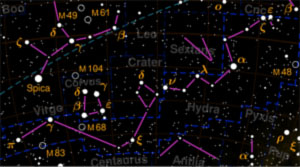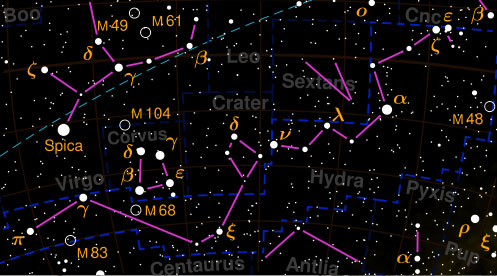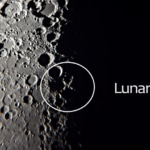Hydra: The Great Serpent
Though not the most well known constellation in the night sky, Hydra, the sea serpent, is the longest of the 88 officially recognized modern constellations.

Though not the most well known constellation in the night sky, Hydra, the sea serpent, is the longest of the 88 officially recognized modern constellations. It spans 1303 square degrees and takes a full six hours to rise each night.
Hydra has been documented as a constellation for millennia. It was included among the 48 constellations catalogued during the second century by Egyptian astronomer Ptolemy, and was also described as a water snake in much of Asia.
The original configuration of Hydra used to be even bigger. It once encompassed the neighboring constellations of Sextans (the sextant), Crater (the cup), and Corvus (the crow), with each of these representing one or more of the monster’s many heads. Later astronomers, including John Flamsteed and Johannes Hevelius, split it into four parts.
For such a large constellation, it may seem surprising that Hydra contains only one bright star, Alphard, a large and distant star that has three times the mass of our Sun. Epsilon Hydrae, Hydra’s northernmost star, at the crown of the serpent’s head, is actually a system of five stars.
Hydra contains three Messier objects, deep sky objects identified by French astronomers Charles Messier and Pierre Méchain during the 18th Century. These are M83, the Southern Pinwheel Galaxy, M68, a globular cluster, and M48, a star cluster.
In Greek mythology, Hydra represents the Lernaean Hydra defeated by Hercules during the second of his Twelve Labors. The Hydra was a many-headed beast that lived in the lake of Lerna, beneath which was the entrance to the underworld, which it guarded. Hercules tried to slay the monster by slicing off its heads with a sickle, but found that, for each head he removed, two more grew back in its place. Hercules’ nephew, Iolaus, solved the problem by searing the wounds closed with a firebrand each time his uncle sliced off a head. Finally, only one head remained. Because this last head was immortal, Hercules pinned it beneath a heavy rock, trapping it for all eternity.
Because of its large size, Hydra has many close neighbors in the sky, including the Zodiac signs Cancer, Leo, Libra, and Virgo.
The original image for this article appears in the Wikimedia Commons.

Jaime McLeod
Jaime McLeod is a longtime journalist who has written for a wide variety of newspapers, magazines, and websites, including MTV.com. She enjoys the outdoors, growing and eating organic food, and is interested in all aspects of natural wellness.






